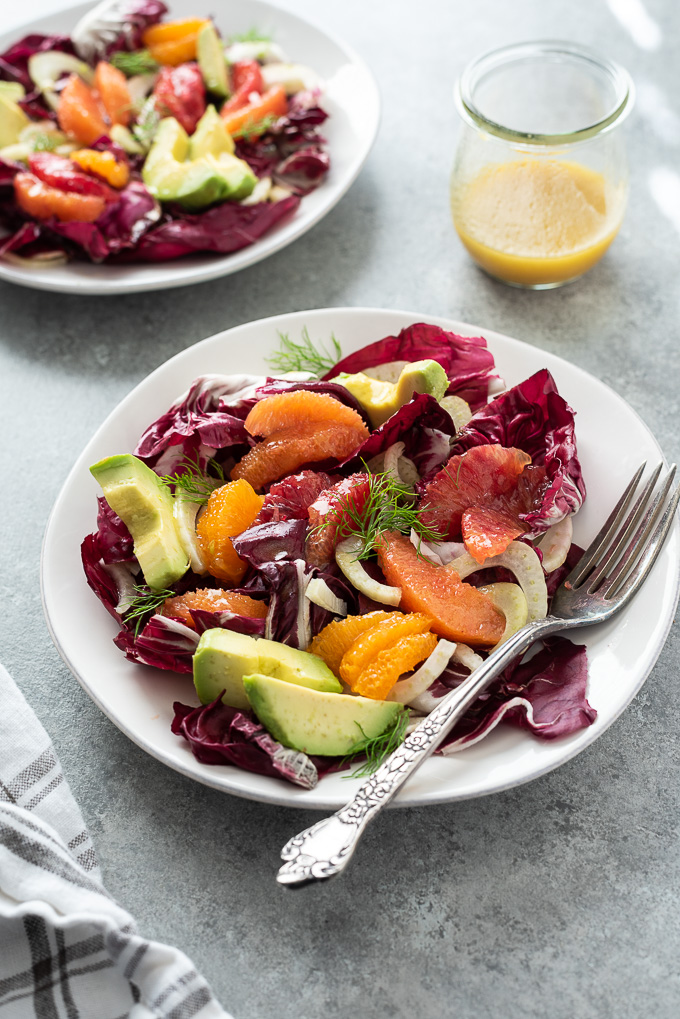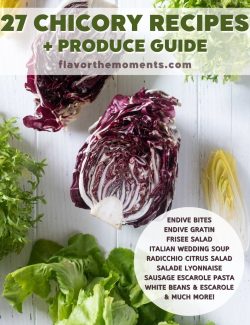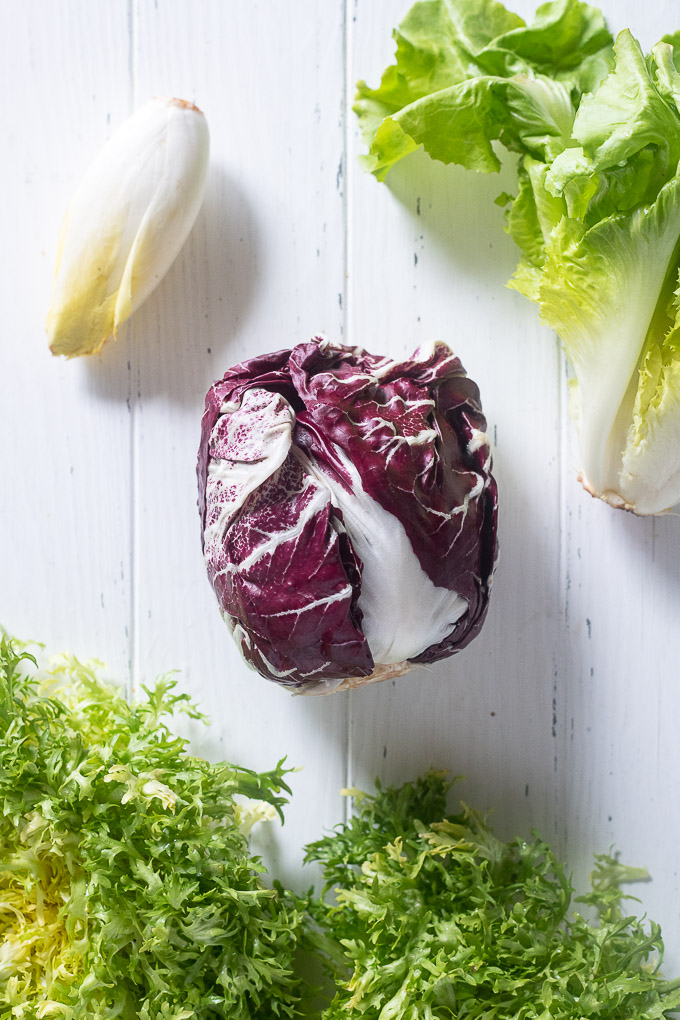27+ Chicory Recipes (+ Produce Guide)
Celebrate chicories with this collection of 27 Chicory Recipes! You’ll find delicious ways to use radicchio, escarole, frisée and Belgian endive, along with information on how to choose and store each, nutrition information and so much more!

Every season provides its own unique bounty of seasonal produce, and I look forward to so many varieties during the winter months.
Chicories are some of my very favorite. I didn’t have much exposure to them prior to cooking school, but thankfully I gained plenty of experience with each variety there, and I quickly fell in love with all of them.
If you’re not familiar with them, they’re hardy lettuces that are bitter in flavor (some more so than others).
If bitterness isn’t your thing, this post will teach you how to tone down that flavor through the cooking process, or simply by pairing them with the right ingredients.
I use chicories daily this time of year, and I hope the collection of Chicory Recipes at the bottom of this post inspire you to use them a lot more often.
Table of contents
If you love produce, be sure to check out the following produce guides for inspiring recipes:
- Apple recipes
- Butternut squash recipes
- Cabbage recipes
- Carrot recipes
- Corn recipes
- Cranberry recipes
- Delicata squash recipes
- Leek recipes
- Fava bean recipes
- Fennel recipes
- Fig recipes
- Persimmon recipes
- Poblano pepper recipes
- Pomegranate recipes
- Rhubarb recipes
- Shishito pepper recipes
- Swiss chard recipes
- Tomatillo recipes
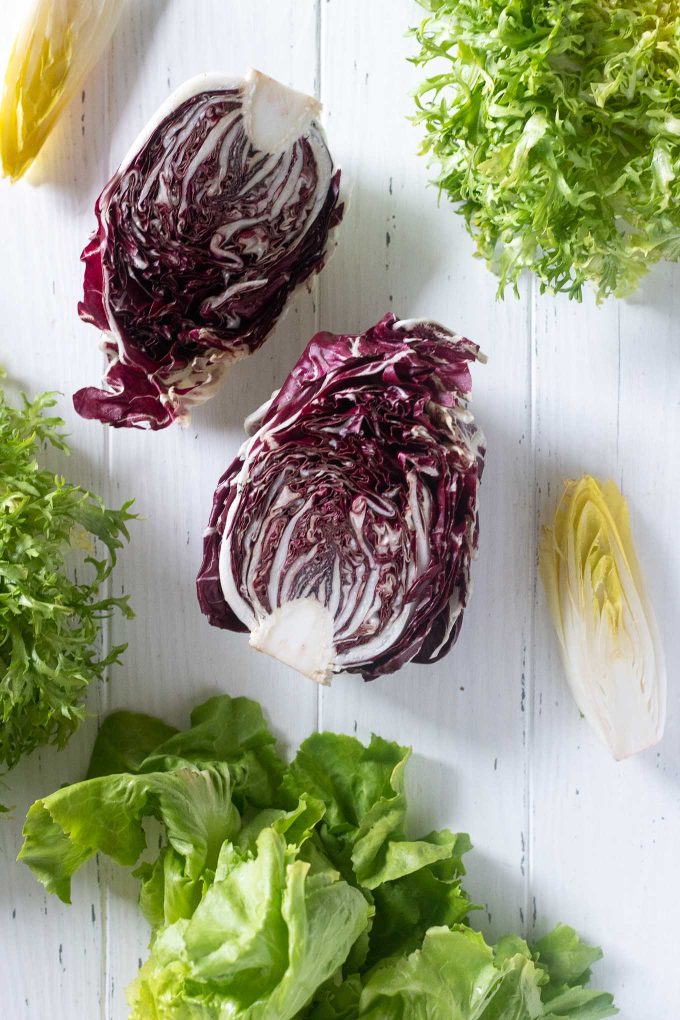
FAQs
Chicories (Cichorium intybus) are hardy leafy vegetables in the chicory family that is similar to lettuce. They’re crisp and colorful, and are generally in season from late fall to early spring.
They’ve been cultivated from the wild chicory plant, which is a perennial with purplish blue flowers. The flowers and leaves of the plant are completely edible, and they have been used for medicinal purposes.
The root of the chicory plant, or chicory root, has been cultivated for centuries in Europe to be used as a coffee substitute because of its bitter flavor.
Chicories have a bitter flavor (some varieties more so than others), so they’re great paired with fruits, cheeses, nuts, meats and so much more.
Chicory lettuce is great raw, sautéed, roasted, braised, grilled and more.
When cooked, the bitterness mellows and a slightly sweet flavor develops.
Chicory greens and lettuces have a wide variety of health benefits. They’re low in calories and carbohydrates, and are good sources of Vitamins A, B, C and K, as well as betacarotene, folic acid and minerals such as calcium, manganese, copper, iron and potassium.
Varieties of chicory lettuce
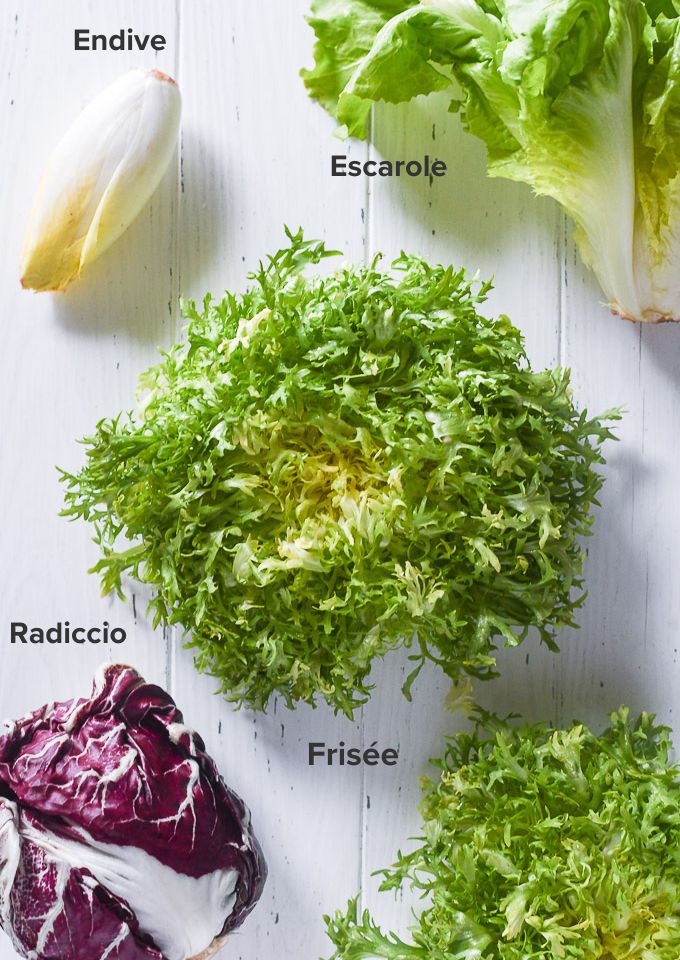
Endive
There are two types of endive, Belgian and red. Belgian endive is pale yellow and white, while red endive is red and white. Both are small, compact and oblong in shape with crisp leaves.
Endive can be roasted, braised and grilled, the leaves can be stuffed and dipped, or it can be chopped and eaten raw in salads or sautéed.
Choosing and storing endive
Choose endive that is heavy in weight and free of discoloration, and store it in an open plastic bag in the crisper drawer of your refrigerator for up to one week.
You can also prep endive in advance and store it in an air tight container to use within 2-3 days.
Escarole
Escarole is a head of leafy greens that is similar in appearance to butter lettuce, but it has a bitter flavor.
It’s nice and sturdy, so it’s great eaten raw or used in sautés, soups, stews and pasta dishes.
Choosing and storing escarole
Choose escarole that is heavy and free of discoloration. Store it in the crisper drawer in an open plastic bag for 5-7 days, and be sure to wash it well before use as it can be quite gritty.
Once it’s prepped, escarole may be stored in the refrigerator for 2-3 days or frozen for up to 3 months.
Frisée (curly endive)
Frisée is a variation of endive that is an open head of lettuce that’s bright green, pale yellow and white in color.
The sturdy leaves are crisp and curly, or frizzy in appearance, and it’s great in both raw and cooked applications.
Choosing and storing frisée
Choose frisée that is heavy in weight and free of discoloration. Store it in the crisper drawer of the refrigerator in an open plastic bag for 5-7 days.
Be sure to wash curly endive well before use as it’s very gritty. Once washed, blot dry and tear into pieces and store in the refrigerator for 2-3 days.
Radicchio
There are several varieties of radicchio, including chioggia, speckled, treviso and castelfranco.
Chioggia radicchio is the most common. It’s a small red and white head that resembles cabbage, but it’s much softer and it’s bitter in flavor.
Treviso radicchio is similar to chioggia but is larger in size, while speckled radicchio is speckled in appearance and is a cross between radicchio and escarole with more delicate leaves.
Castelfranco radicchio has creamy white leaves with magenta speckles and delicate tasting leaves.
Radicchio leaves are great stuffed like lettuce wraps, or chopped and eaten raw in salads. It’s also great sautéed, roasted, grilled and more!
Choosing and storing radicchio
Choose radicchio that’s heavy in weight and free of discoloration.
Radicchio may be stored in an open plastic bag in the crisper drawer of the refrigerator for up to one week.
To prep, remove outer leaves and separate leaves to use as lettuce wraps, or chop for other uses. Once prepped, store it in the refrigerator and use within 3-4 days.
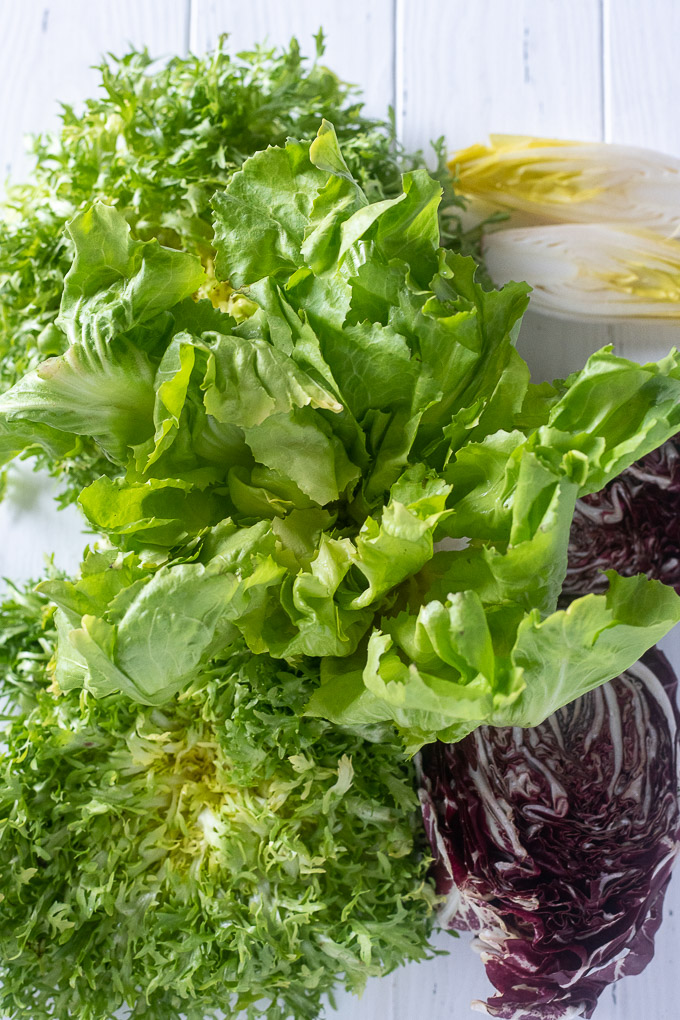
27+ Chicory Recipes
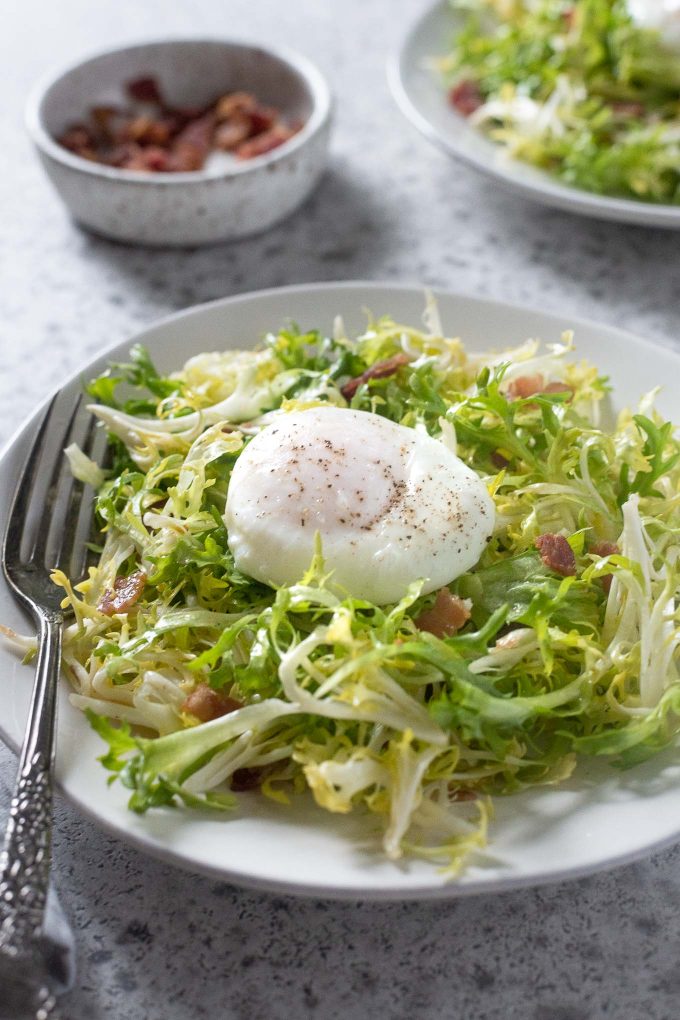
Salade Lyonnaise
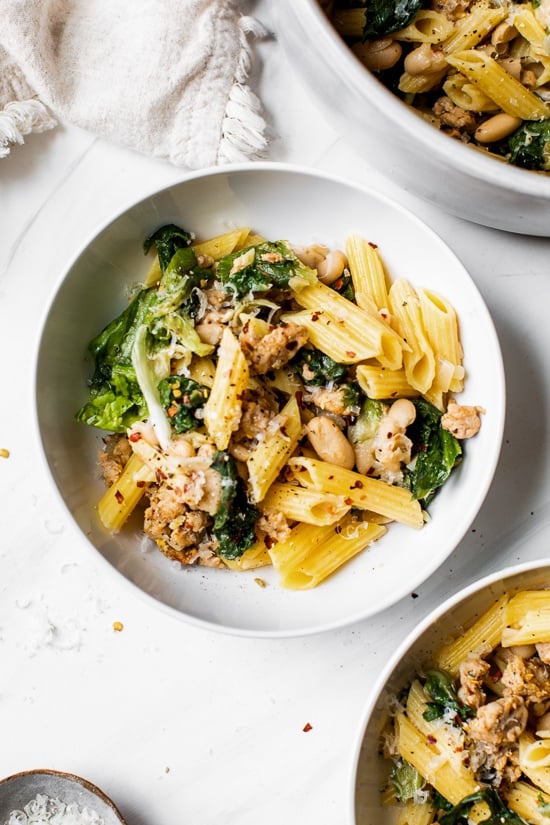
Pasta with Italian Chicken Sausage, Escarole and Beans

Roasted Radicchio Wedge Salad

Italian Wedding Soup
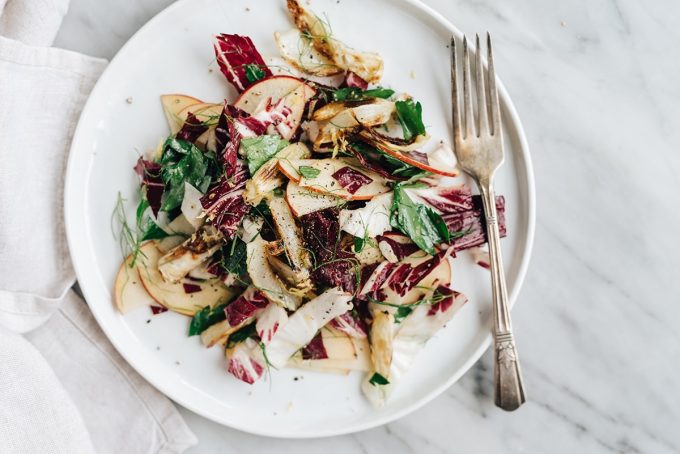
Roasted Fennel Salad with Apple and Radicchio
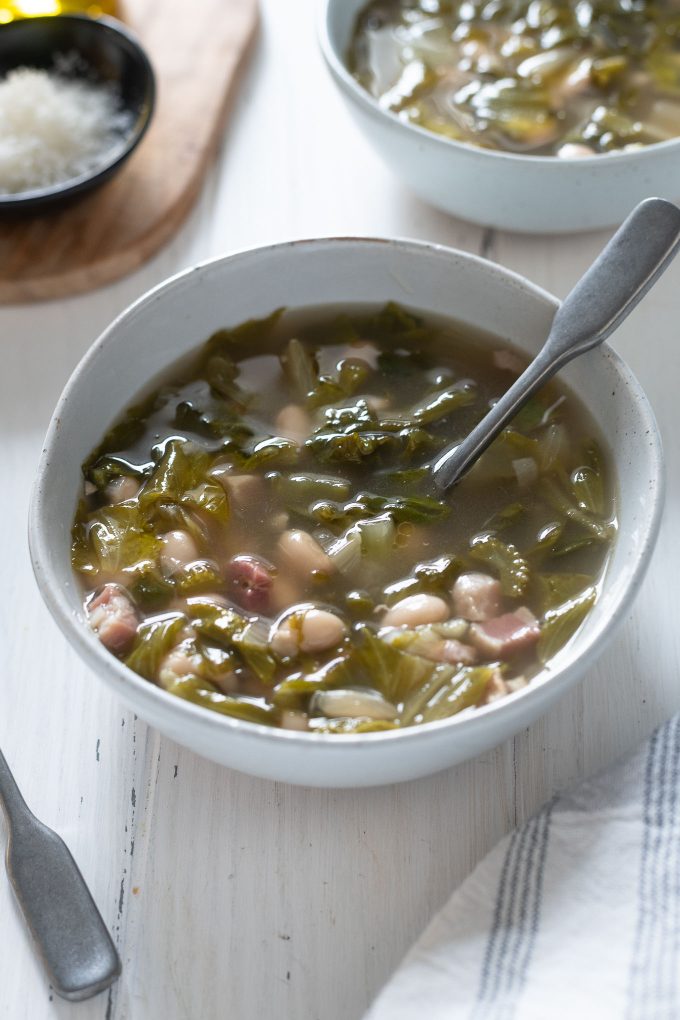
Escarole and Bean Soup
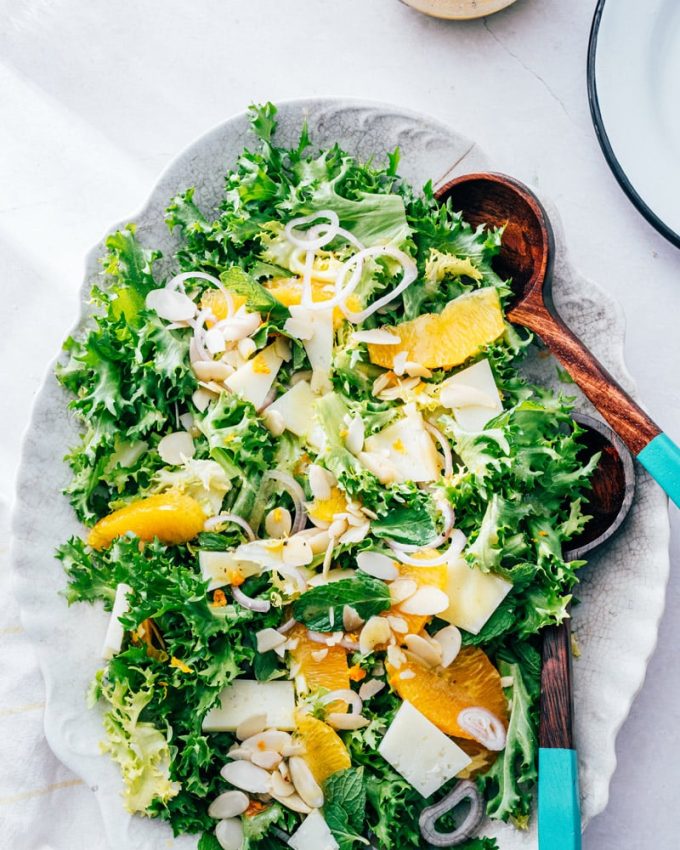
Frisee Salad
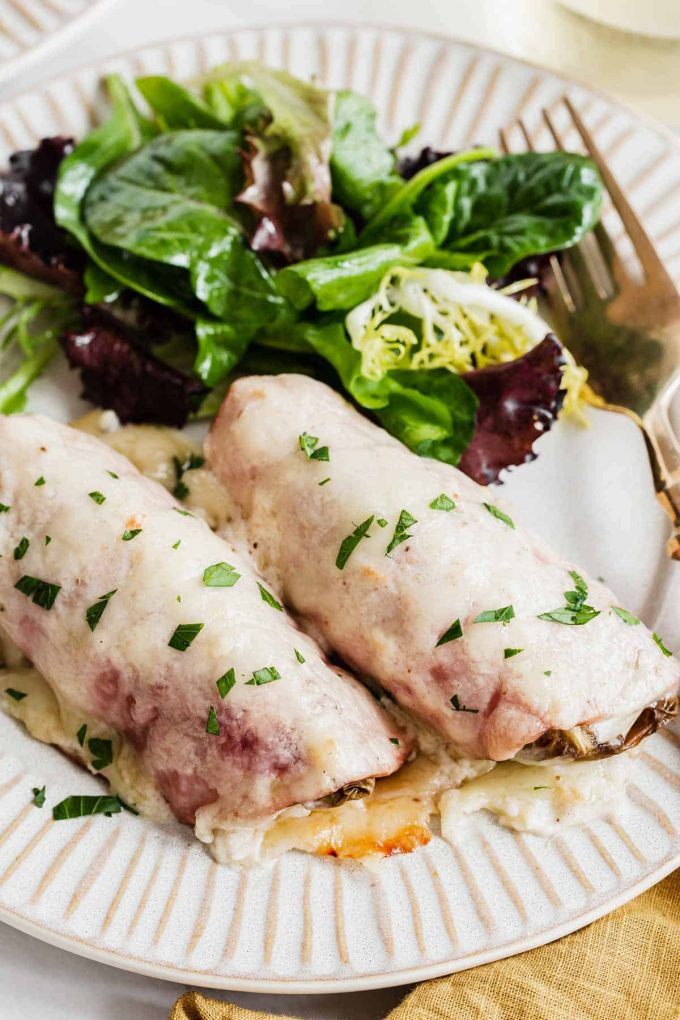
Endives au Gratin with Ham and Cheese – Endive Gratin

Zesty Tuna Lettuce Wraps
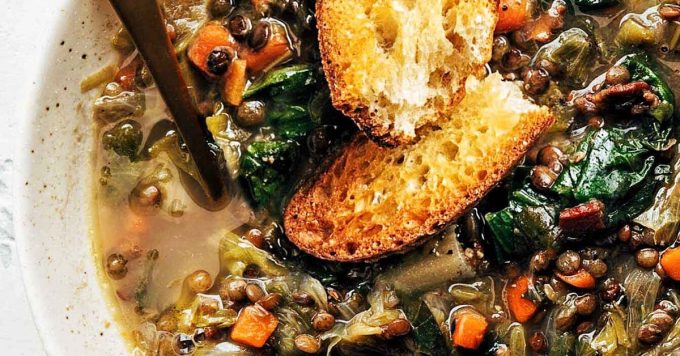
French Lentil Soup with Escarole

Horta Vrasta (Greek Boiled Leafy Greens) – Herbs & Flour
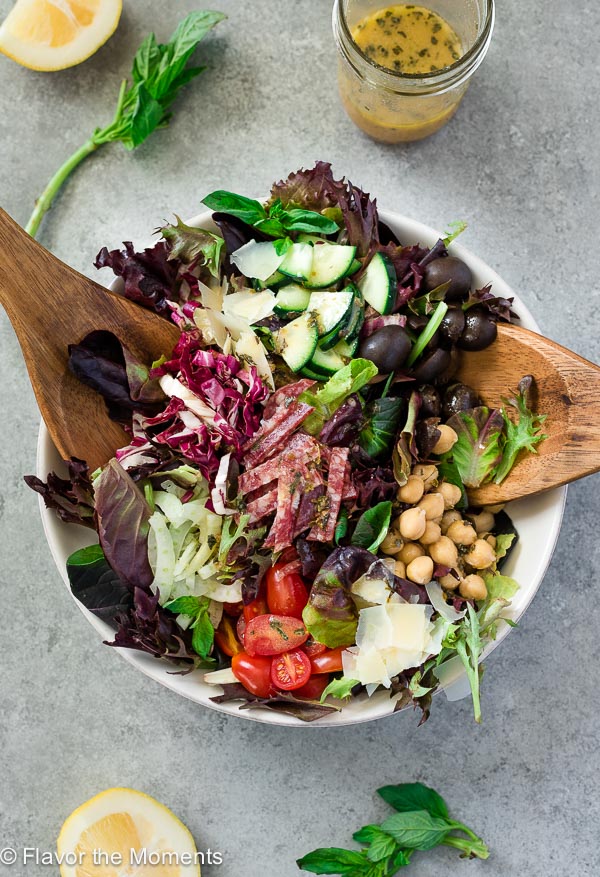
Italian Chopped Salad
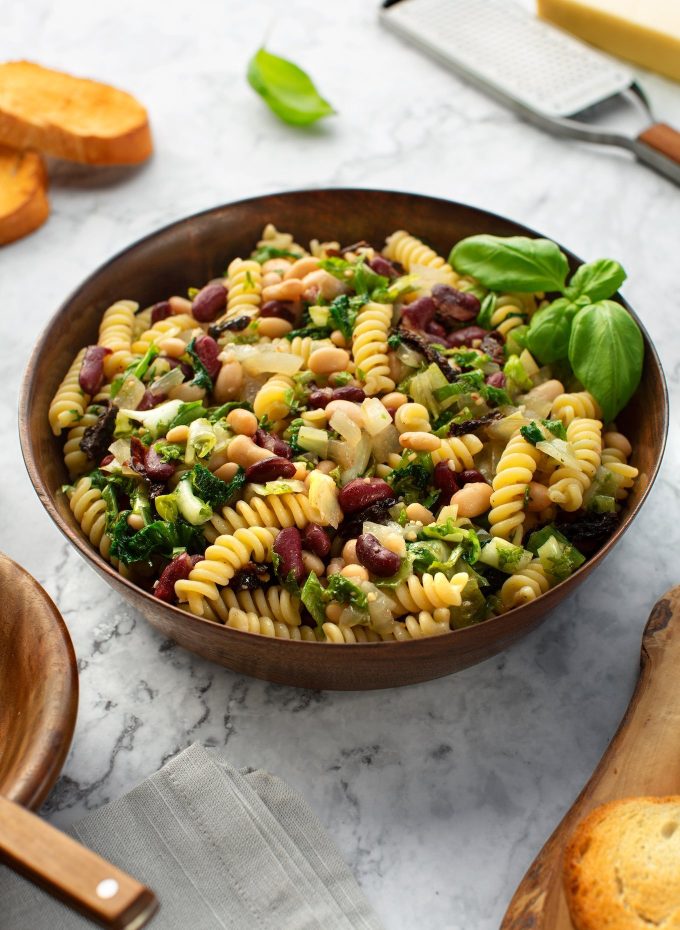
Pasta with Escarole and Two Beans – The Vegan Atlas
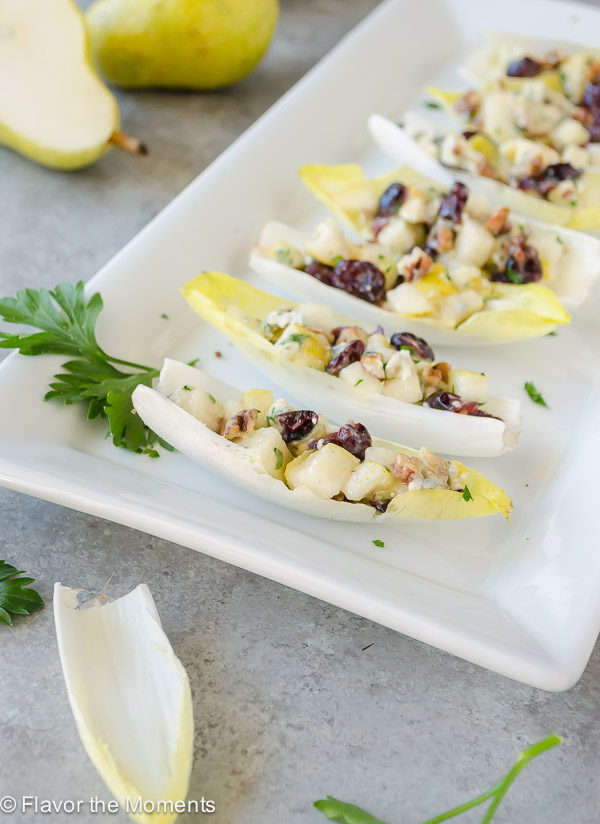
Endive Salad Bites with Pears, Blue Cheese, and Pecans
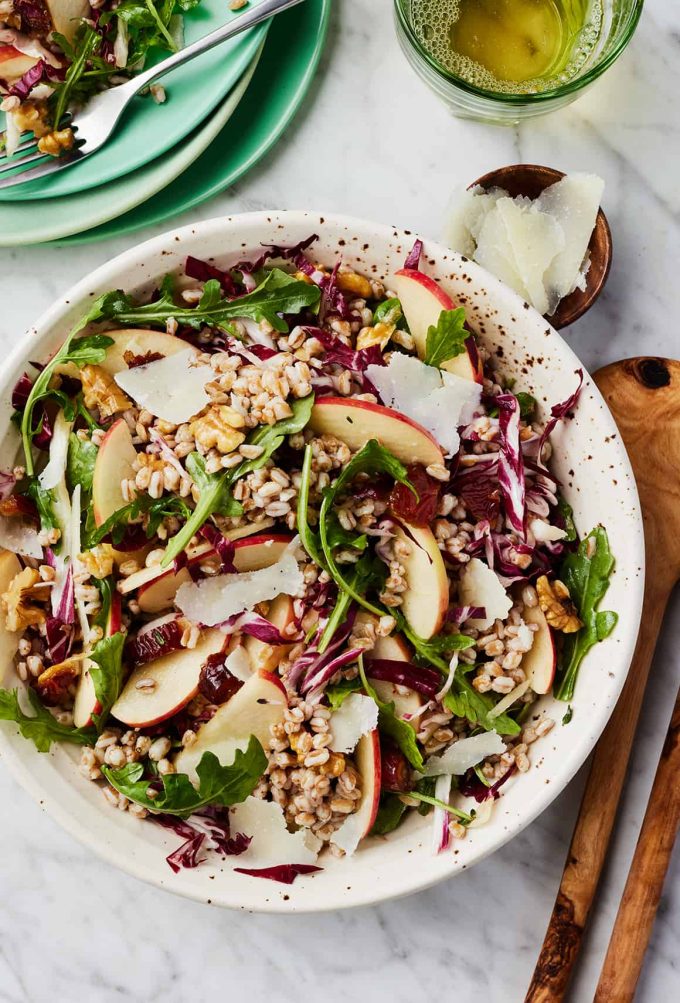
Farro Salad – Love and Lemons
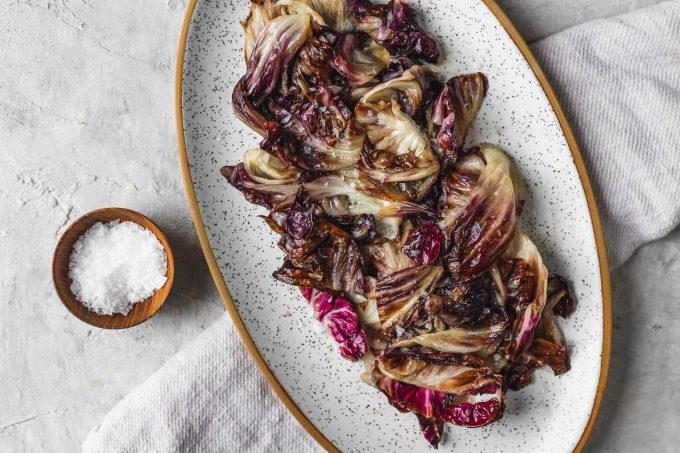
Perfectly Saute Radicchio to Mellow Its Sharp Flavor
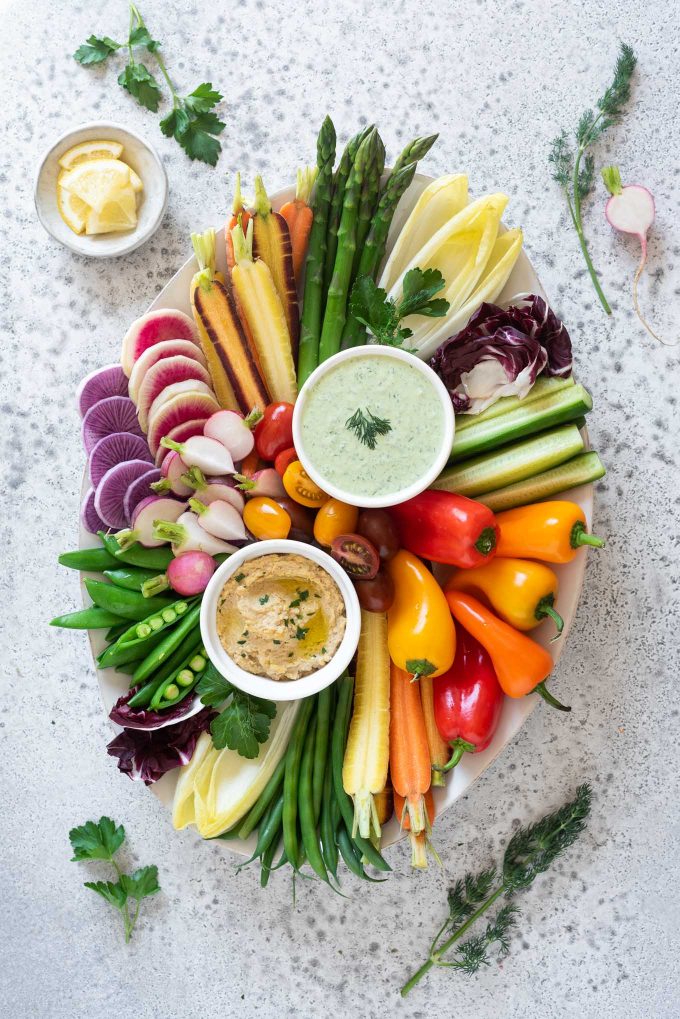
Easy Crudités Platter
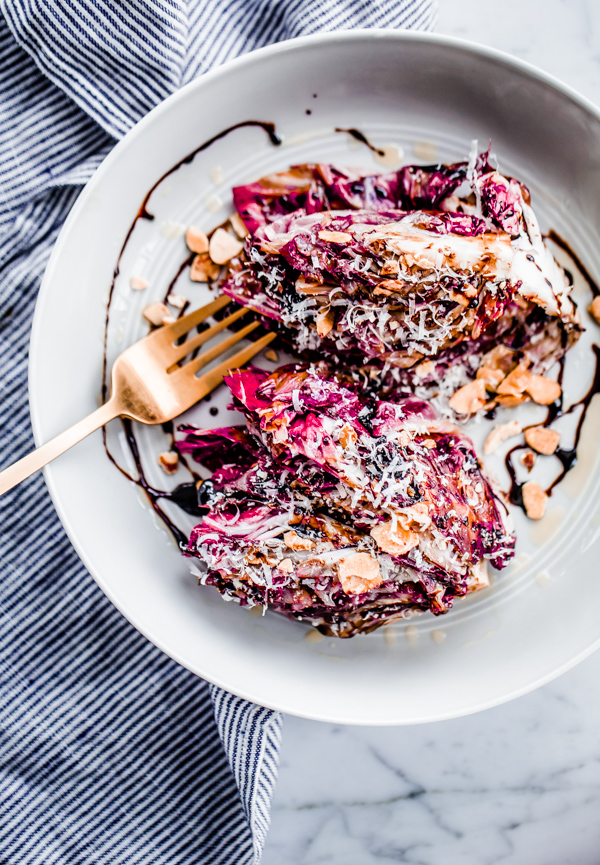
Grilled Radicchio with Fig Balsamic Syrup, Parmigiano, and Honey-Roasted Almonds

Endive Salad Recipe

White Beans and Escarole Recipe

Radicchio Endive Salad – with Fennel and Tangy Dijon Herb Dressing
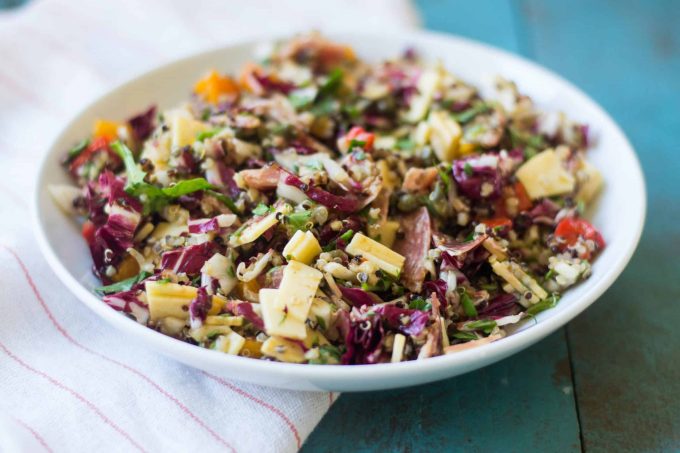
Chopped Antipasto Salad
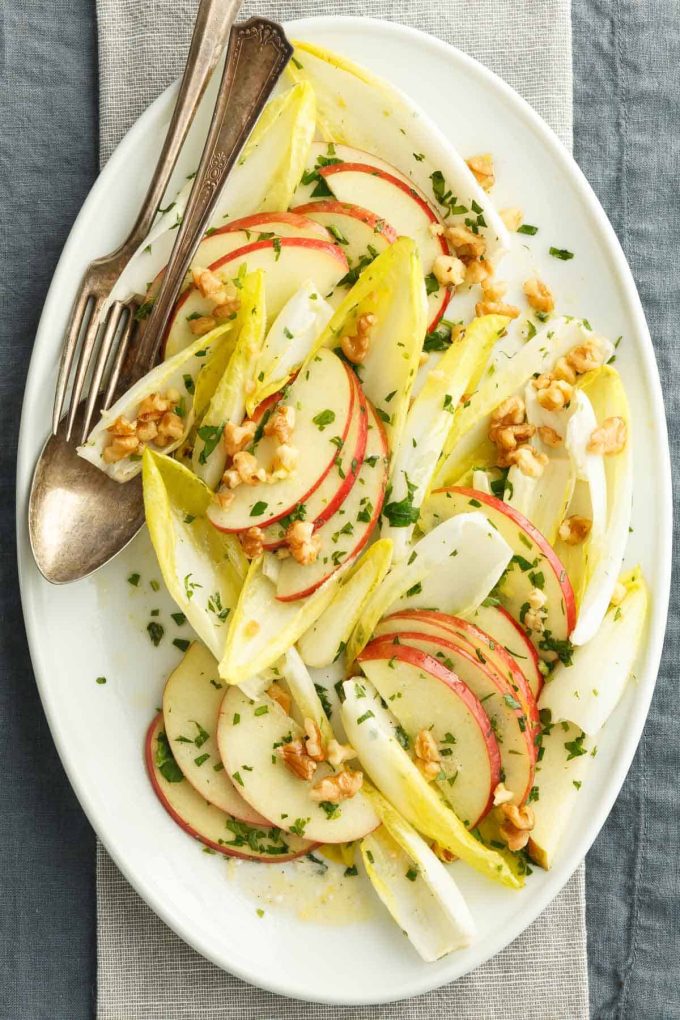
Belgian Endive Salad | Gourmande in the Kitchen
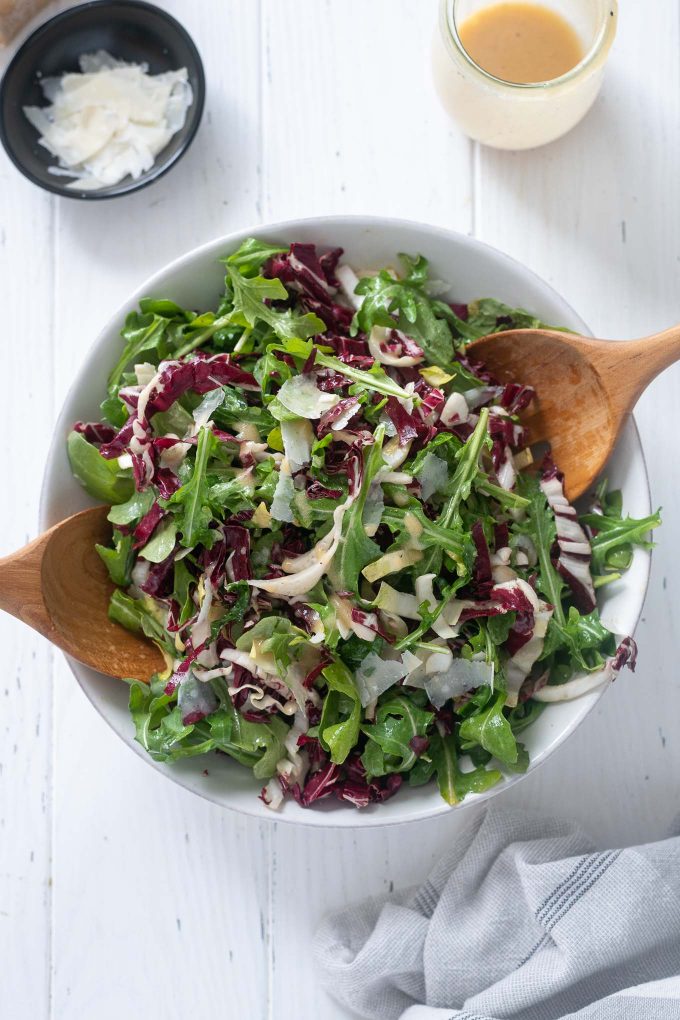
Italian Tricolore Salad
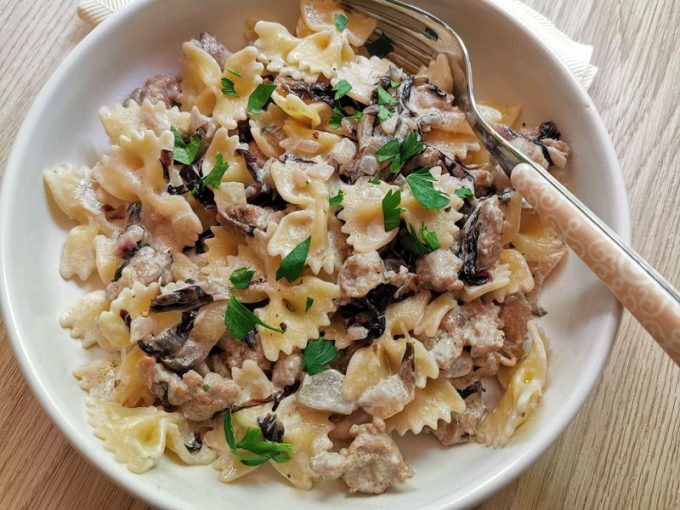
Sausage and Radicchio Pasta Recipe.
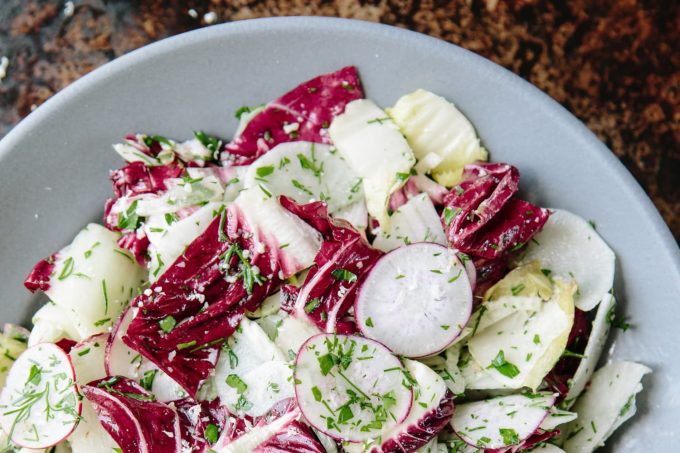
Bar Tartine’s Chicory Salad with Anchovy Dressing
